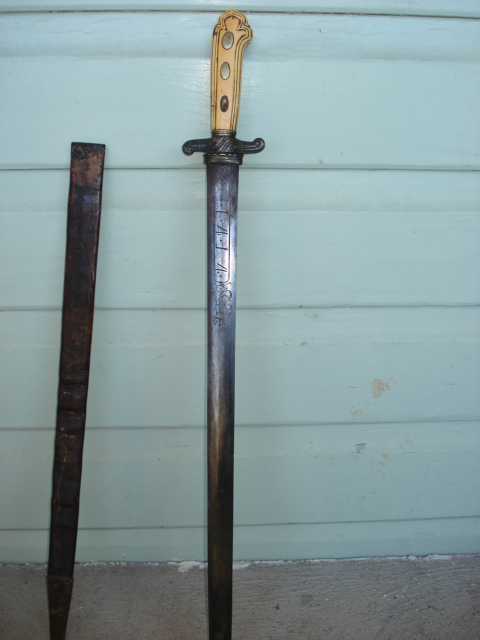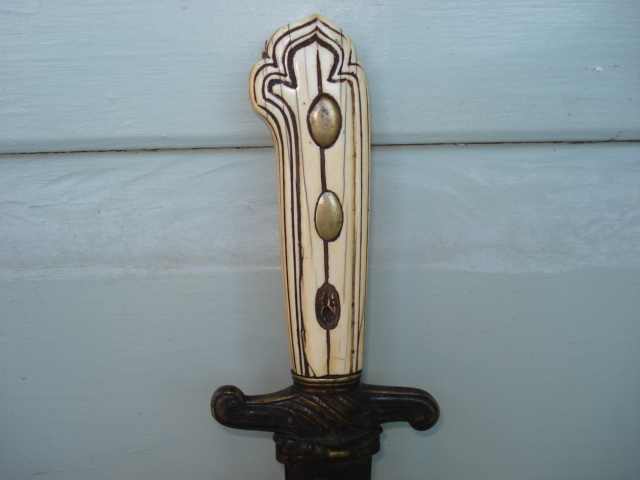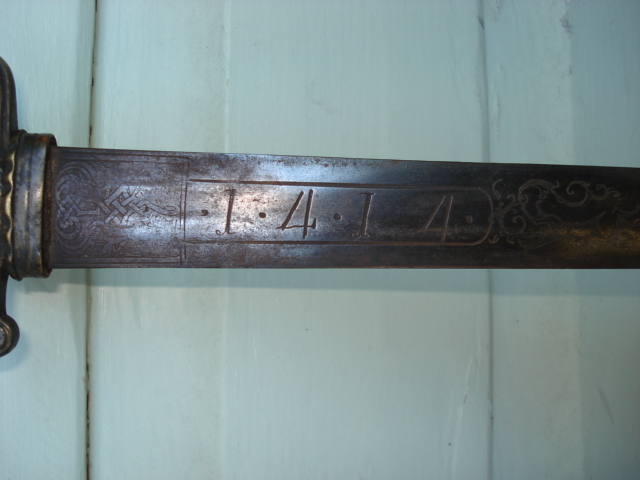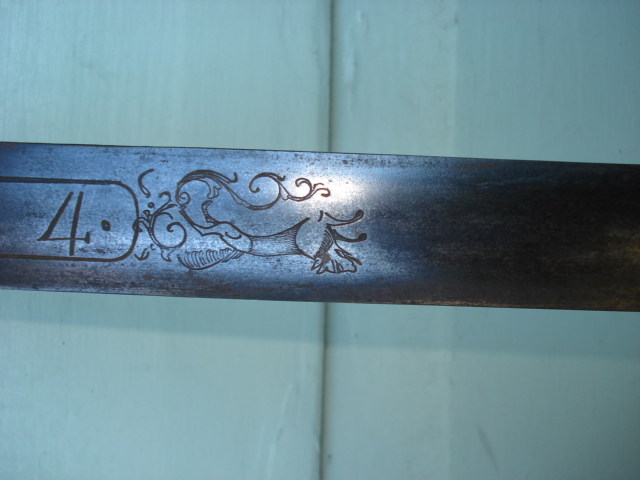| Author |
Message |
|
Peter Ward
Location: australia Joined: 10 Apr 2008
Posts: 1
|
 Posted: Thu 10 Apr, 2008 1:57 am Post subject: sword unknown now with pics Posted: Thu 10 Apr, 2008 1:57 am Post subject: sword unknown now with pics |
 |
|
Please help, I'm looking for information on a sword very similar to the poloscio da caccia argenta (pic 121 in hunting edged armoury) The sword I have has a ivory handle and on the blade has the numbers 1.4.14 and a picture of a dog next to it. Please see the pictures attached
Any information would be appreciated. Thanks pete
 Attachment: 123.29 KB Attachment: 123.29 KB

 Attachment: 130 KB Attachment: 130 KB

 Attachment: 125.71 KB Attachment: 125.71 KB

 Attachment: 130.36 KB Attachment: 130.36 KB

|
|
  |
 |
Shahril Dzulkifli

|
 Posted: Sat 03 May, 2008 9:03 am Post subject: Sword Unknown, Now With Pics Posted: Sat 03 May, 2008 9:03 am Post subject: Sword Unknown, Now With Pics |
 |
|
Peter,
I think the sword pictured is actually a hunting sword perhaps of European origin.
|
|
  |
 |
|
Jonathan Hopkins
|
|
  |
 |
|
Jim McDougall
|
 Posted: Mon 19 May, 2008 2:07 pm Post subject: Posted: Mon 19 May, 2008 2:07 pm Post subject: |
 |
|
Just looking through earlier threads, since I'm new to this forum, and there seems to be a treasure trove of interesting pieces that may prove of further interest, such as this one posted by Peter.
It is indeed a hunting sword/hirschfanger probably German or East European and of mid to latter 18th c. What is most interesting is the 'talismanic' blade, and the decorative motif.
The 1414 as is now well known is obviously not a date, but a group of significant occult numbers, and the four and one also occur in the palindrome 1441. On Solingen blades, these numbers often appear along with the 'running wolf' typically termed the 'passau wolf', which may or may not have influenced the dog on this example. It remains unclear whether these numbers represent numeric combinations for good fortune, or perhaps in the 1414 numeric, the Biblical passage from Job 14:14, "..a man dying, he will live again". In occult lore, the numbers are intended for good fortune, and the 4 often represents Jupiter and as protective talisman in symbols.
Also, the 1 and 4 are applied in mathematical combinations based on the lucky number 7.
Best regards,
Jim
|
|
   |
 |
Bruno Giordan

|
 Posted: Tue 20 May, 2008 1:12 am Post subject: Posted: Tue 20 May, 2008 1:12 am Post subject: |
 |
|
It was common among the slavonic guardss in service to Venice too.
At the Marzoli in Brescia there are some examples of austrian manufacturing.
|
|
  |
 |
|
Jim McDougall
|
 Posted: Tue 20 May, 2008 7:25 am Post subject: Posted: Tue 20 May, 2008 7:25 am Post subject: |
 |
|
| Bruno Giordan wrote: | It was common among the slavonic guardss in service to Venice too.
At the Marzoli in Brescia there are some examples of austrian manufacturing. |
Thank you for responding Bruno.
What you note is most interesting, but I am unclear on what is meant. What was common among Slavonic guards? Are you thinking this sword might be from Venice or Brescia? What is the Marzoli?
Best,
Jim
|
|
   |
 |
|
Kelly Powell
Location: lawrence, kansas Joined: 27 Feb 2008
Posts: 123
|
 Posted: Tue 20 May, 2008 12:37 pm Post subject: Posted: Tue 20 May, 2008 12:37 pm Post subject: |
 |
|
|
Ithink he was talking about the 1 4 4 1 thing....which is cool as hell.....was this masonic in origin?
|
|
  |
 |
|
Jim McDougall
|
 Posted: Tue 20 May, 2008 1:02 pm Post subject: Posted: Tue 20 May, 2008 1:02 pm Post subject: |
 |
|
| Kelly Powell wrote: | | Ithink he was talking about the 1 4 4 1 thing....which is cool as hell.....was this masonic in origin? |
Thanks so much Kelly, I thought that too but was unclear exactly what was meant. I'm glad you find these very esoteric markings and symbolism interesting as well. I've studied much of it for many years now, not only on European and British weapons but into the ethnographic weapons of many cultural spheres.
The numeric palindromes 1414 and 1441 were not Masonic, but your observation is very astute as there are indeed many numeric based symbolisms that did key Masonic origins. I have tried to discuss these topics over many years on a number of forums, but often the discussions have been derailed by concerns with such esoteric topics. I have always maintained that in order to understand markings and esoteric motif and symbolism, it is often important to try to set aside advanced modern thinking and try to get into the mindset of other times, what they believed and thought. The markings are real, and when we realize why they were there, it often helps in understanding the weapon historically.
I'm not sure how widespread the use of these number combinations written out in this manner went, it seems primarily on German blades, and the 'talismanic blades' had origins with German hunting swords (hirschfangers) in latter 17th to early 18th century. The 'gemetria' or numerology did manifest often in other means of qualification, with symbols or sometimes multiples in them, in other blade centers.
I'm hoping that maybe we might develop a look further into talismanic blades here, and that others with such examples might post them and share thoughts on them.
All best regards,
Jim
|
|
   |
 |
|
|

